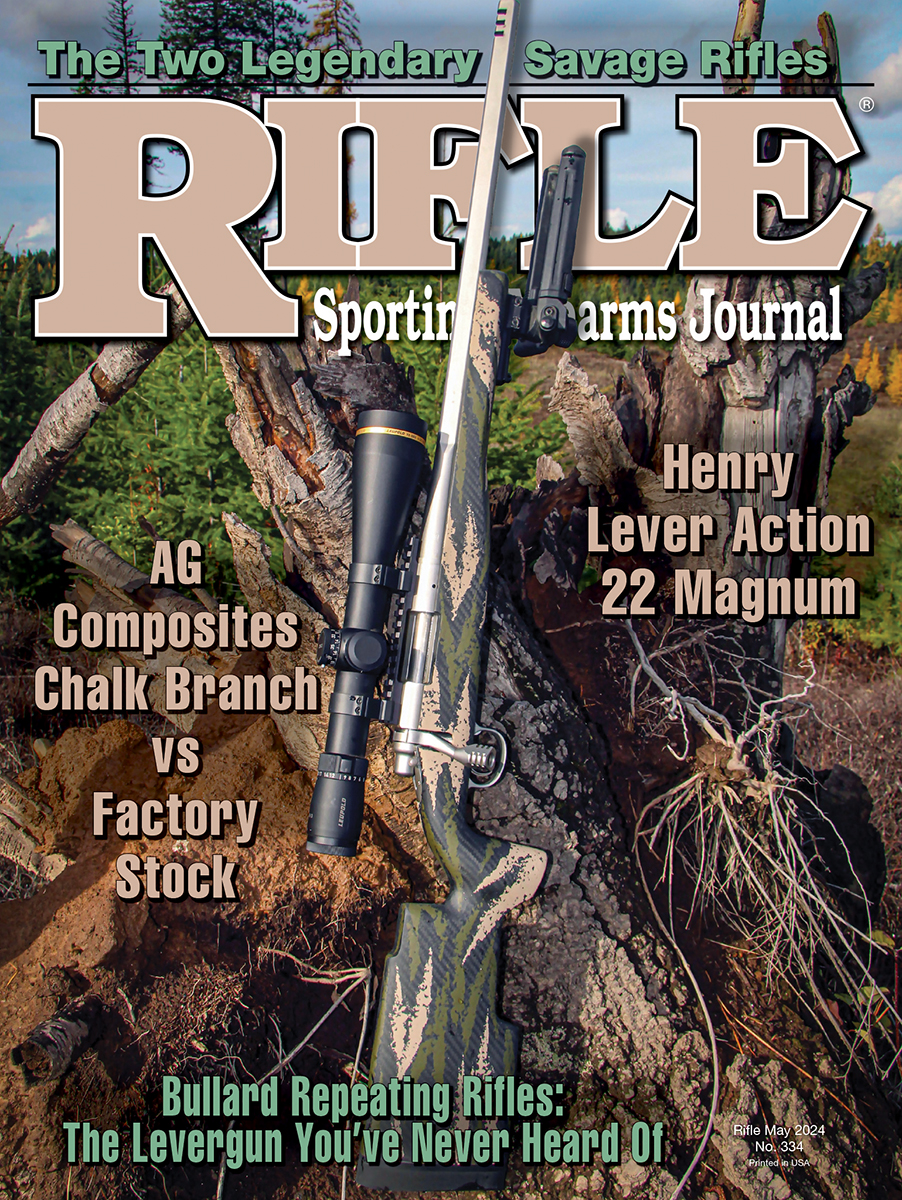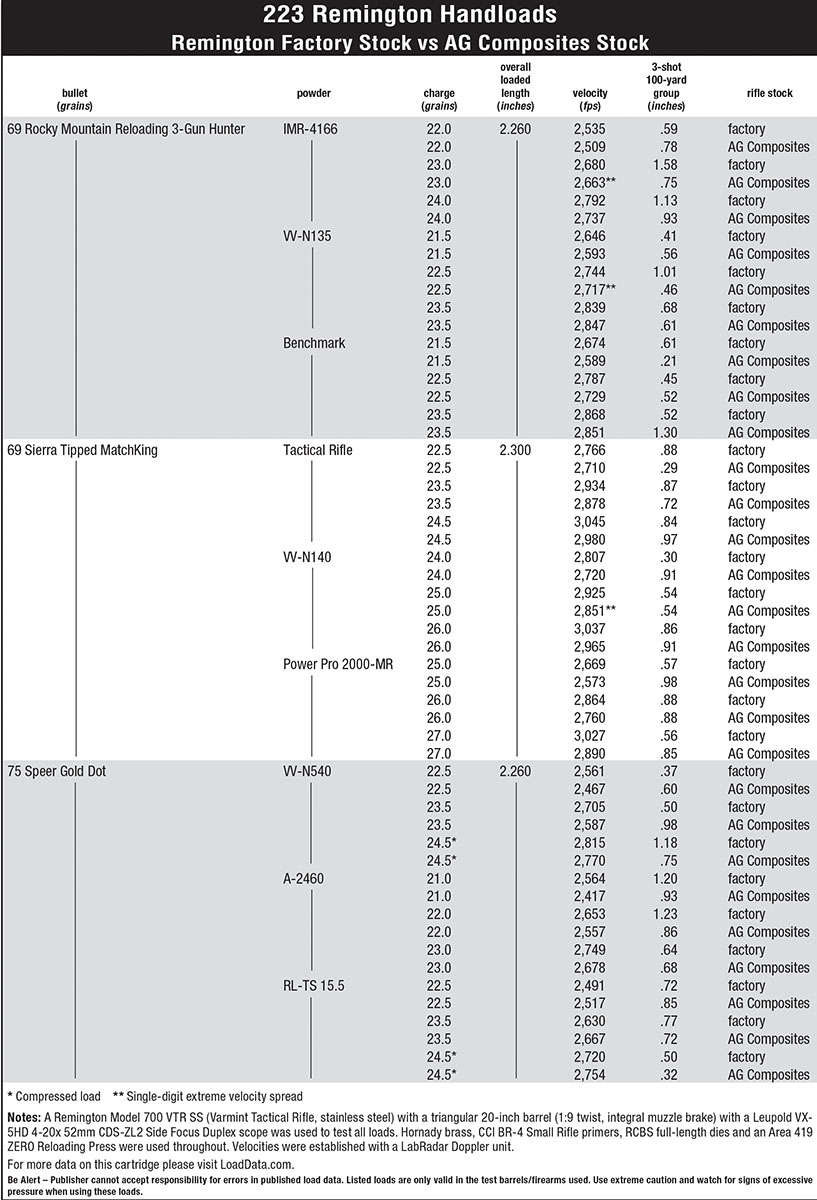AG Chalk Branch Rifle Stock
Factory Stock vs AG Composites Chalk Branch Stock
feature By: S. Maroon | May, 24
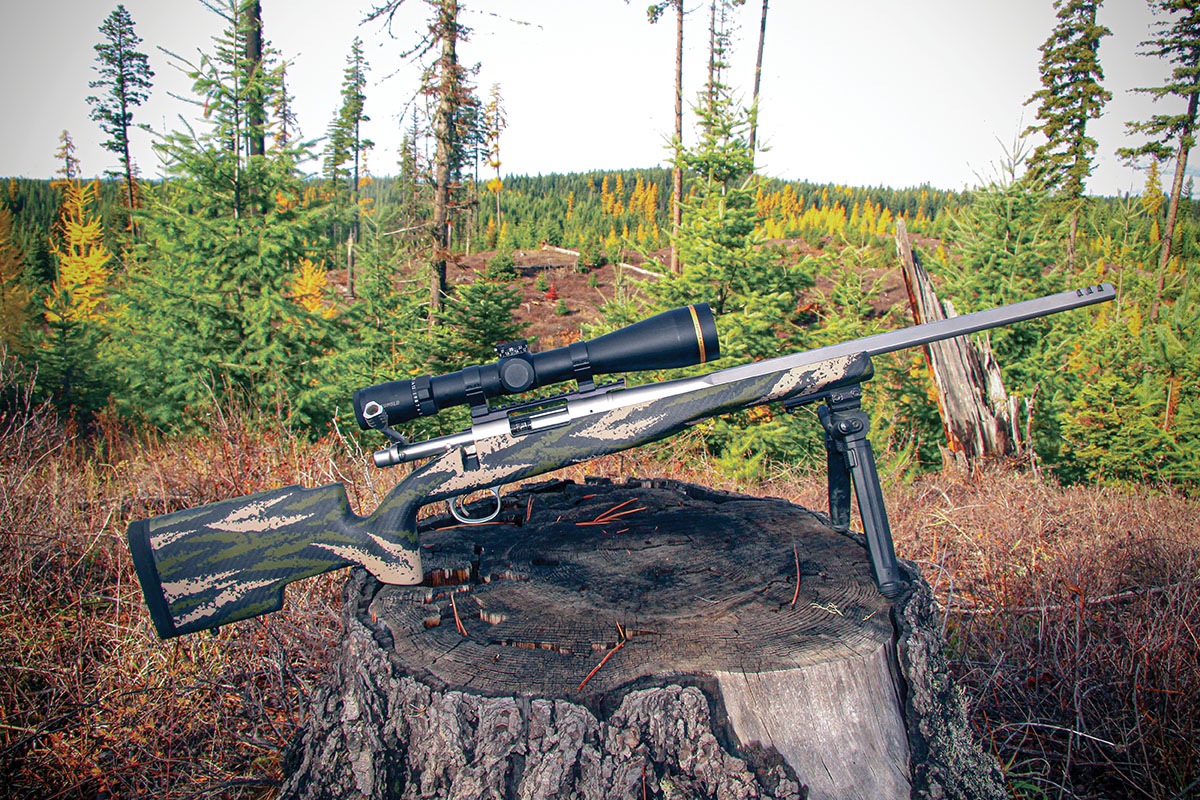
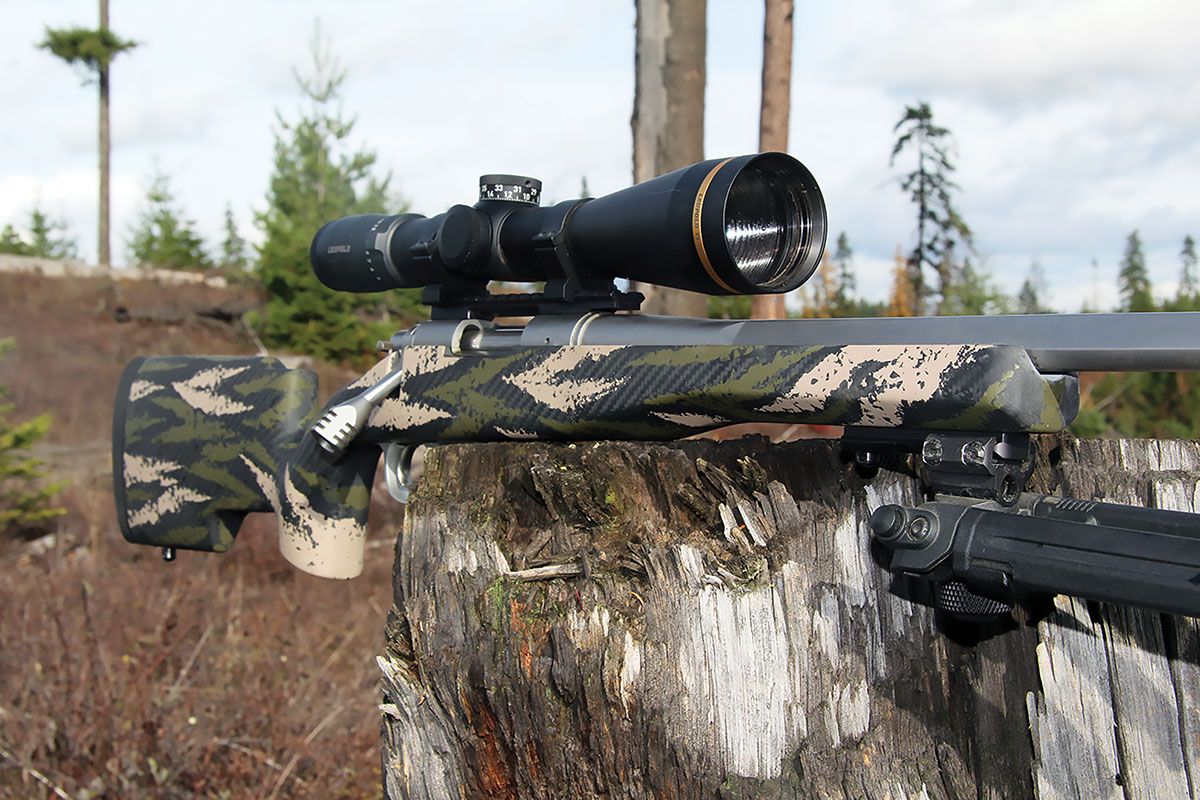
AG Composites offers a dozen distinctive stock models, measuring from 29.5 (the 25-ounce Privateer) to 32.3 inches overall (the Thumbhole Ferrata), the lineup included forend widths from 1.51 to 2.375 inches. These specifications and the addition of adjustable combs necessitating metal hardware directly affect the finished weight. All include ¼-inch-thick aluminum inserts in the forend to allow drilling and tapping for various rail systems (AG Composites can install ¼x20 threaded inserts) and all include aluminum action-screw pillars. AG Composites stocks do not require bedding, a stable and rigid interface created from a high-strength carbon composite that does not carry the thermal dynamic issues of aluminum bedding blocks. Other common features include a 13.5-inch length of pull (custom length of pulls can be ordered on some models) and 1-inch Pachmayr Decelerator recoil pads.
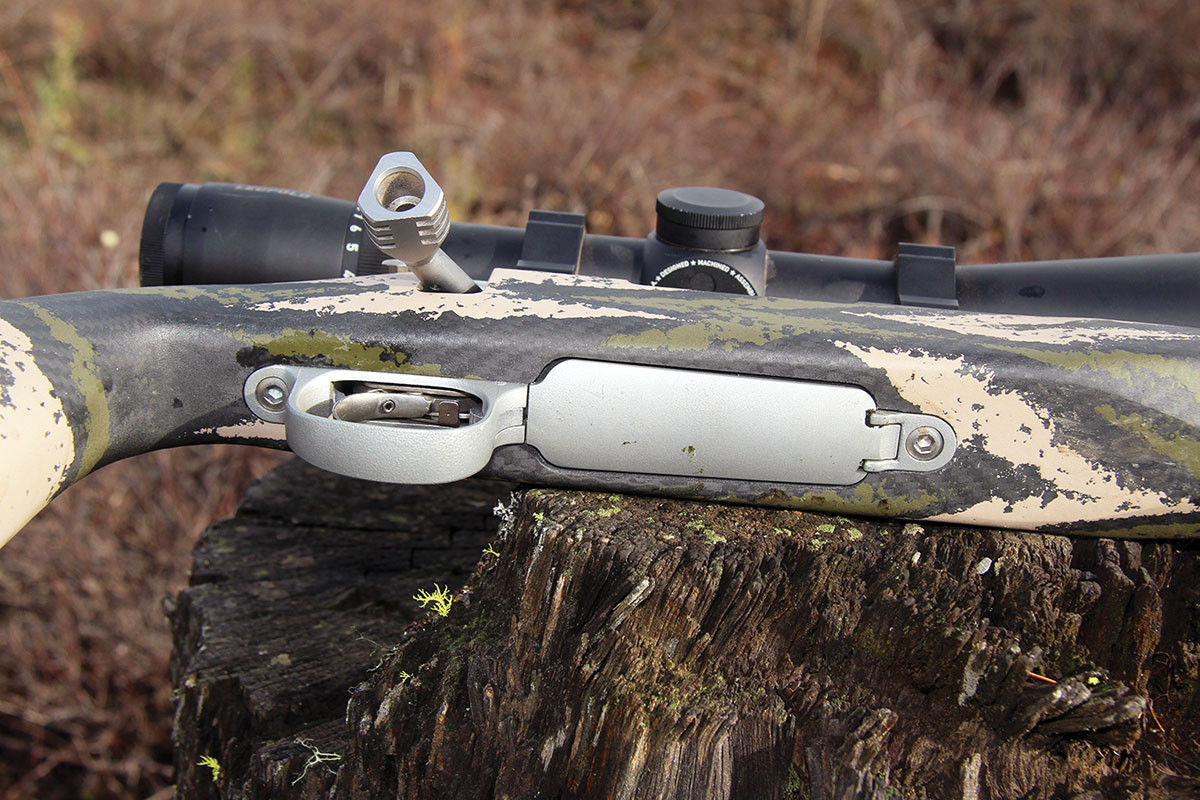
While chatting with AG Composites Owner, Matt Tandy, at SHOT Show 2023, he offered to provide a stock, asking which model I’d prefer. An answer eluded me. AG Composite stocks are inletted for actions including models such as Bergara B14 and Premier, Zermatt Bighorn Origin, SR3 and TL3, four Curtis actions, three Kelbly, Mesa Precision, a couple Stillers and Terminus, plus several others – and of course, the standard Remington 700. Stocks are offered for long- and short-action rifles. As far as I could recall, all of my Remingtons already had quality aftermarket stocks.
Upon returning home and entering my walk-in gun safe, it hit me. I spied my Remington 700 VTR SS (Varmint Tactical Rifle, stainless steel) in 223 Remington and found my answer. Forgetting that rifle may be an admission of owning too many varmint rifles, as it represented an ideal candidate for a stock swap. Now, I had to make a tough decision, as AG Composites’ selection is a treasure trove of spicy options.
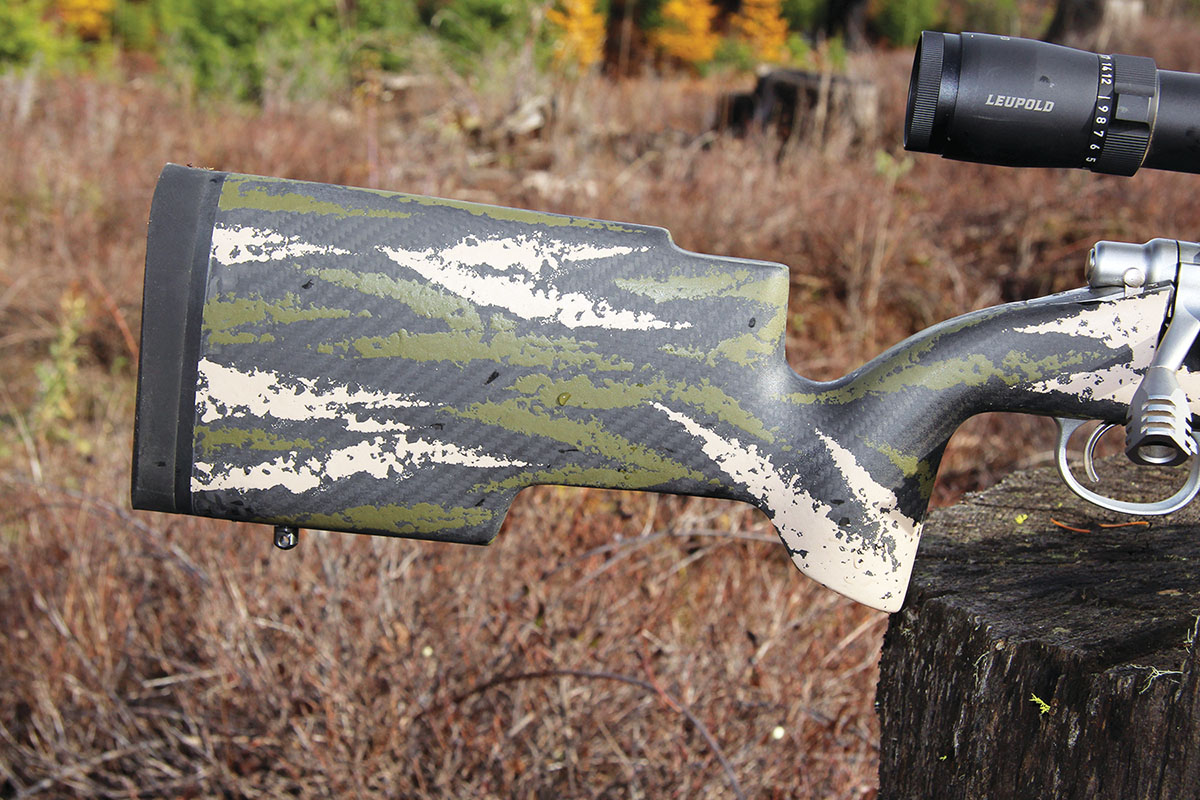
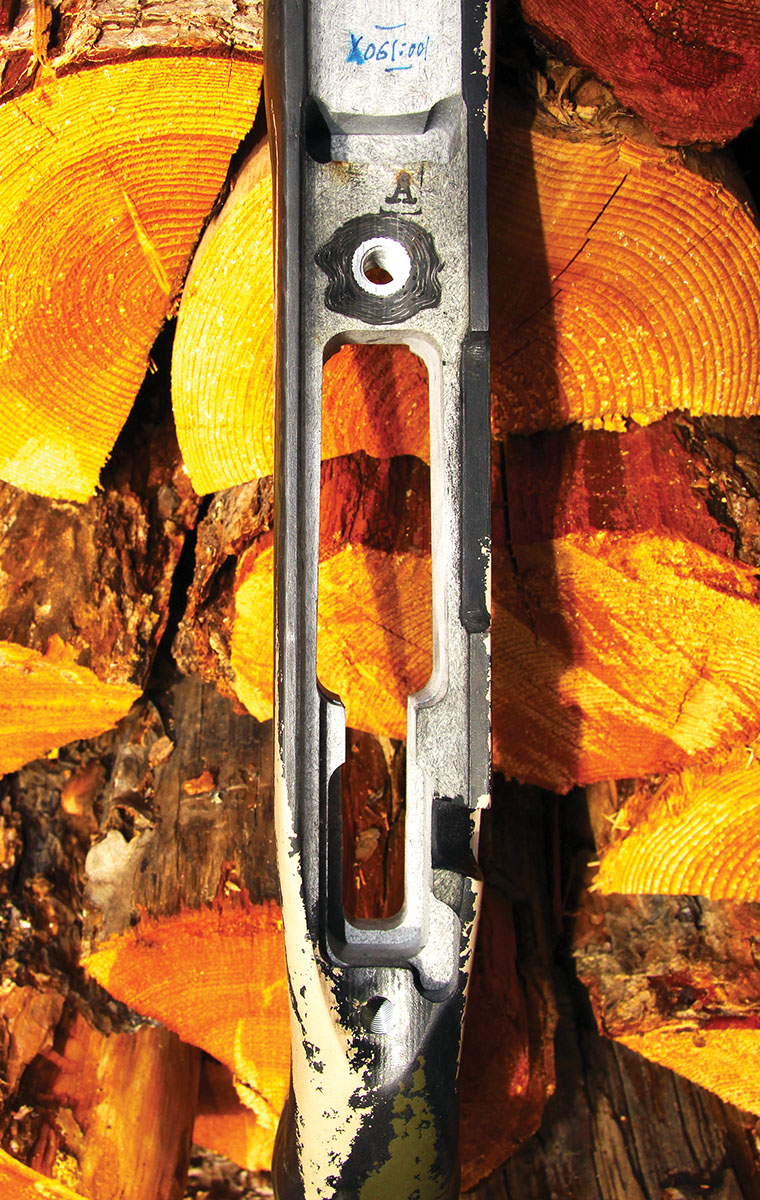
The 27-ounce, 30.8-inch long Sportsman is a more traditional American-style stock with 1.75-inch wide forend that is offered in right-hand only. It included .625 inch worth of comb drop and a drop of .375 inch at the heel from center bore. Two sling studs are provided. The AG Carbon All Terrain (CAT) is a sporter-style stock with a raised cheek pad that also weighs 27 ounces and measured 30.8-inches long with a 1.75-inch-wide forend. The drop at the comb and heel mirror Sportsman specifications.
A 28-ounce, 30.9-inch-long Visagoth model included a 1.8-inch-wide forend holding two sling studs. It had what I would term a Monte Carlo-style butt combined with a vertical grip and a 1.8-inch-wide forend. The drop at comb is .25 inch from the center of the bore, and the drop at the heel measured .20 inch. The AG Armor weighs 34 ounces with an overall length of 30.9 inches and a pronounced 2.375-inch wide forend and butthook serve a rear bag. This is a decided target stock, and also offered in a 42-ounce Adjustable Armor model. It includes .20 inch of drop at the comb and heel, drop from the center of the bore (the adjustable starting at a .20-inch drop when set at its lowest point).
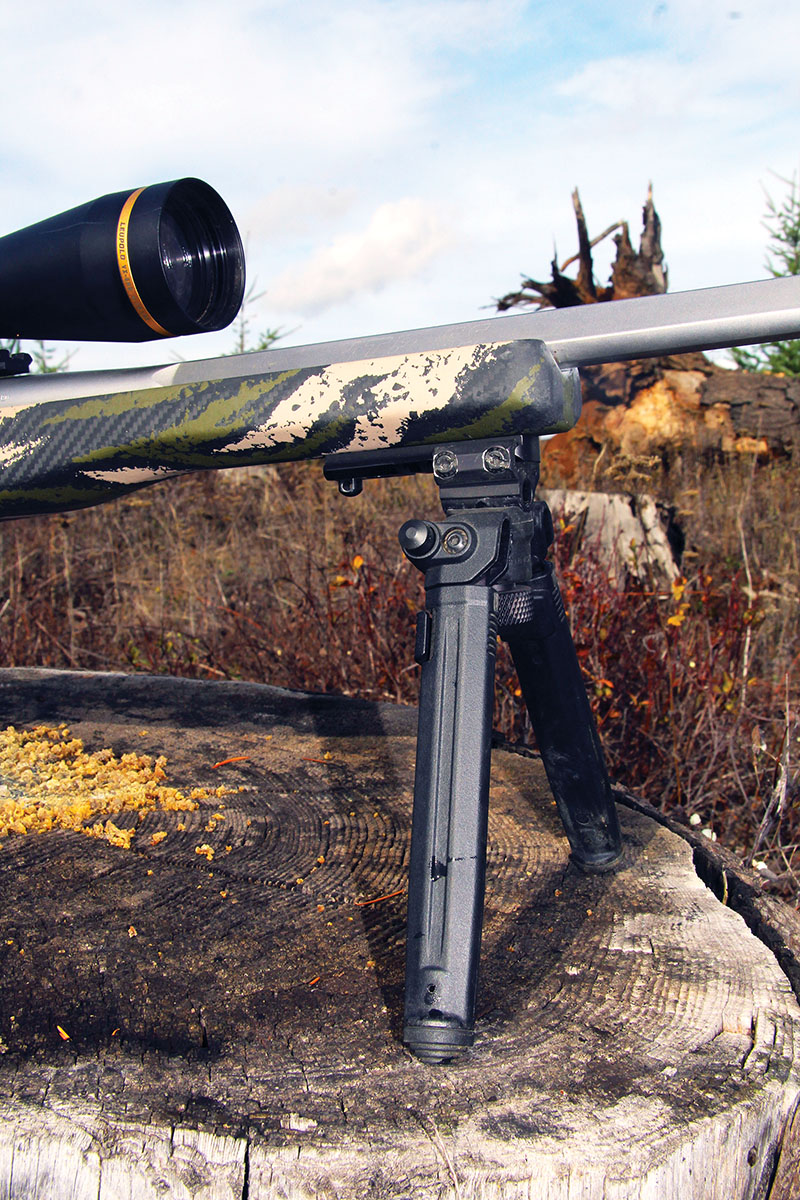
This brings me to the Chalk Branch (an adjustable version is also offered) and the model I ultimately chose to cradle my VTR. This is a tactical-style stock weighing 31 ounces, measuring 31 inches long, and included aluminum pillars as mentioned. It has a 2-inch wide forend that sits steadily across a rest, a butthook to accommodate a rear bag and a comfortable vertical grip with palm swells and a deep thumb groove. Viewed from the side, the angular forend tapers down to lower the rifle’s center of gravity atop a bipod. The high comb places my eye perfectly behind the Leupold 4-20x 52mm VX-5HD scope that works hand-in-glove with this accurate rifle. AG Composites installed a five-slot section of Picatinny rail to the forend to accommodate my Magpul 1913 Picatinny Rail Bipod. This piece of rail also conveniently holds both an integrated sling stud and quick detach socket. Otherwise, the Chalk Branch comes with three installed sling studs.
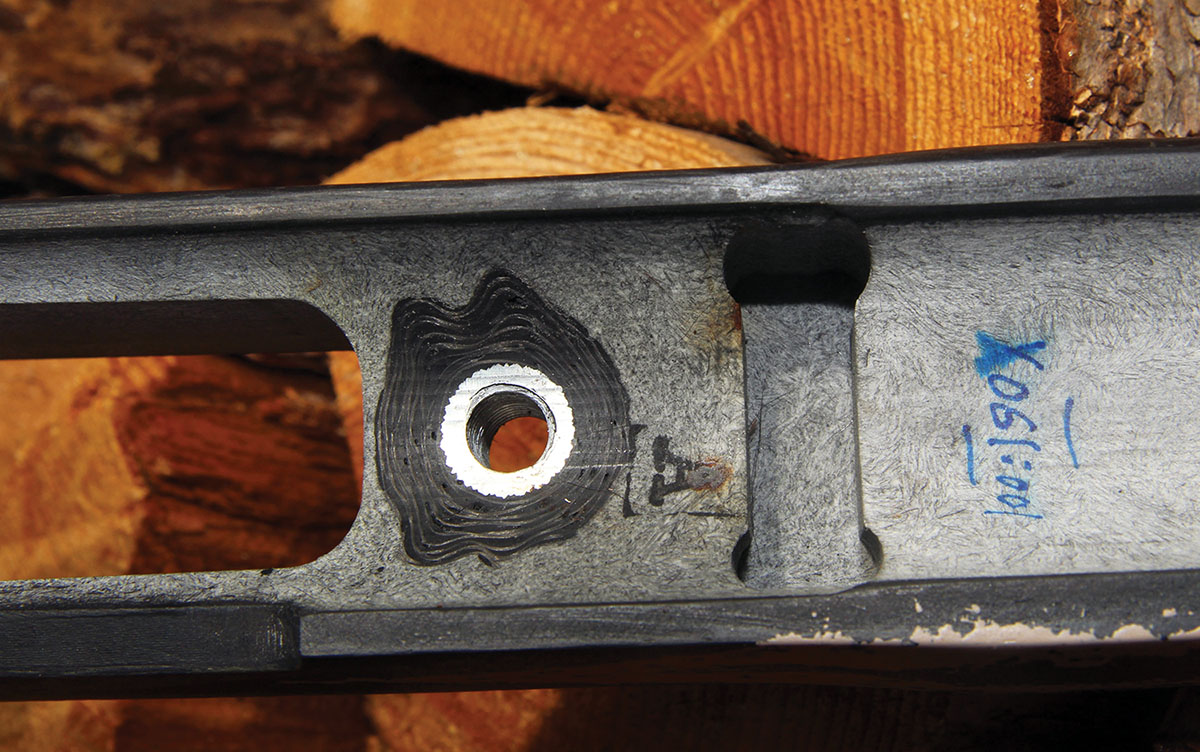
The action fit snuggly, the bottom hinge plate bottom metal/trigger guard popped right into place, and the top tang fit perfectly with no conspicuous gaps. I ordered a “varmint profile” barrel channel but found it necessary to conduct a minimal amount of sanding to open the channel slightly and free-float the non-standard VTR triangular barrel.
I received the Chalk Branch stock in the midst of ground squirrel season, so I was naturally anxious to put my “new rifle” to work. The only ammunition on hand, loaded with 40-grain bullets, shot well during sight-in, despite the 1:9 rifling twist. The rifle fit well and proved rock steady over a bipod. The rifle soon accounted for a bushel of Idaho clear-cut Columbia ground squirrels, making me even more anxious to test proven heavy-bullet loads and determine if the stock upgrade had significantly improved accuracy.
AG Composites uses space-age materials and state-of-the-art manufacturing technologies to create stocks that are not only lighter, but more rigid. AG Composites begins with modern design software to create CAD models, followed by modeling of mould tooling and machining fixtures. Once a design is settled on, molds are precision CNC-machined from metal to ensure every stock produced from that mold is precisely reproduced. AG Composites then utilizes the highest-grade carbon fiber, epoxy, and paint products.
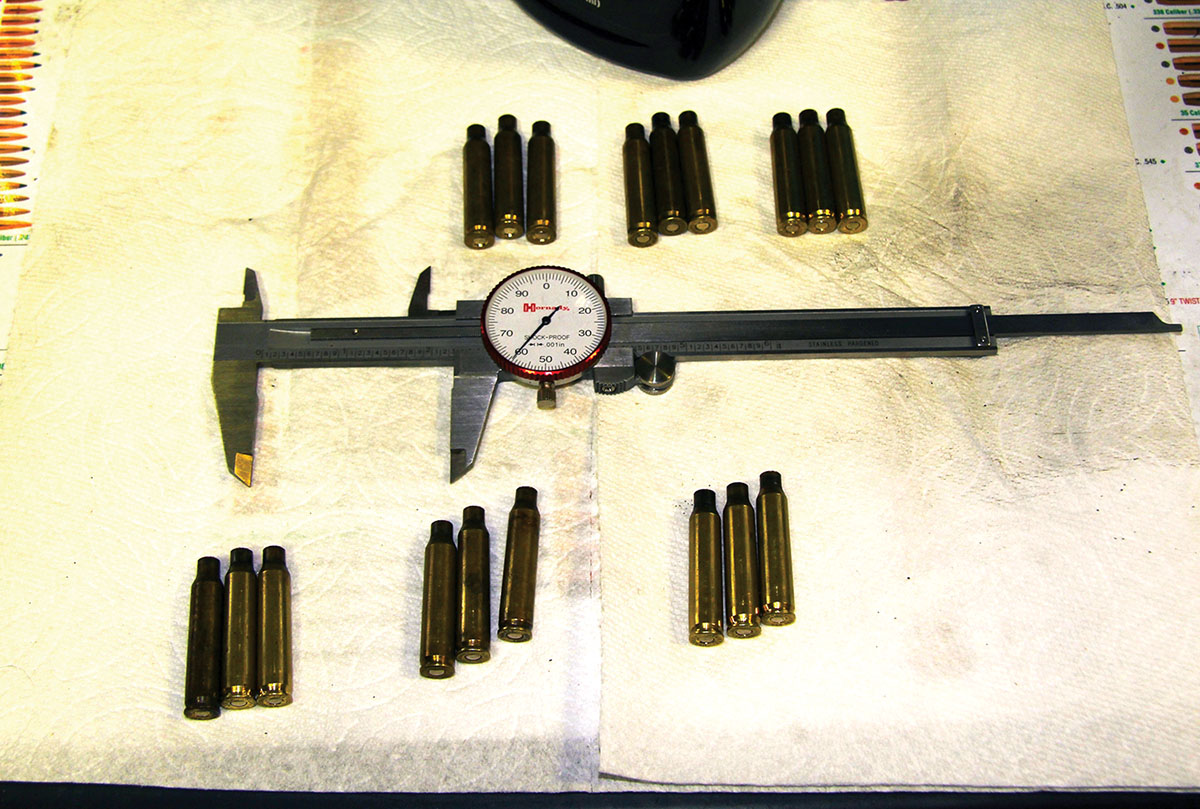
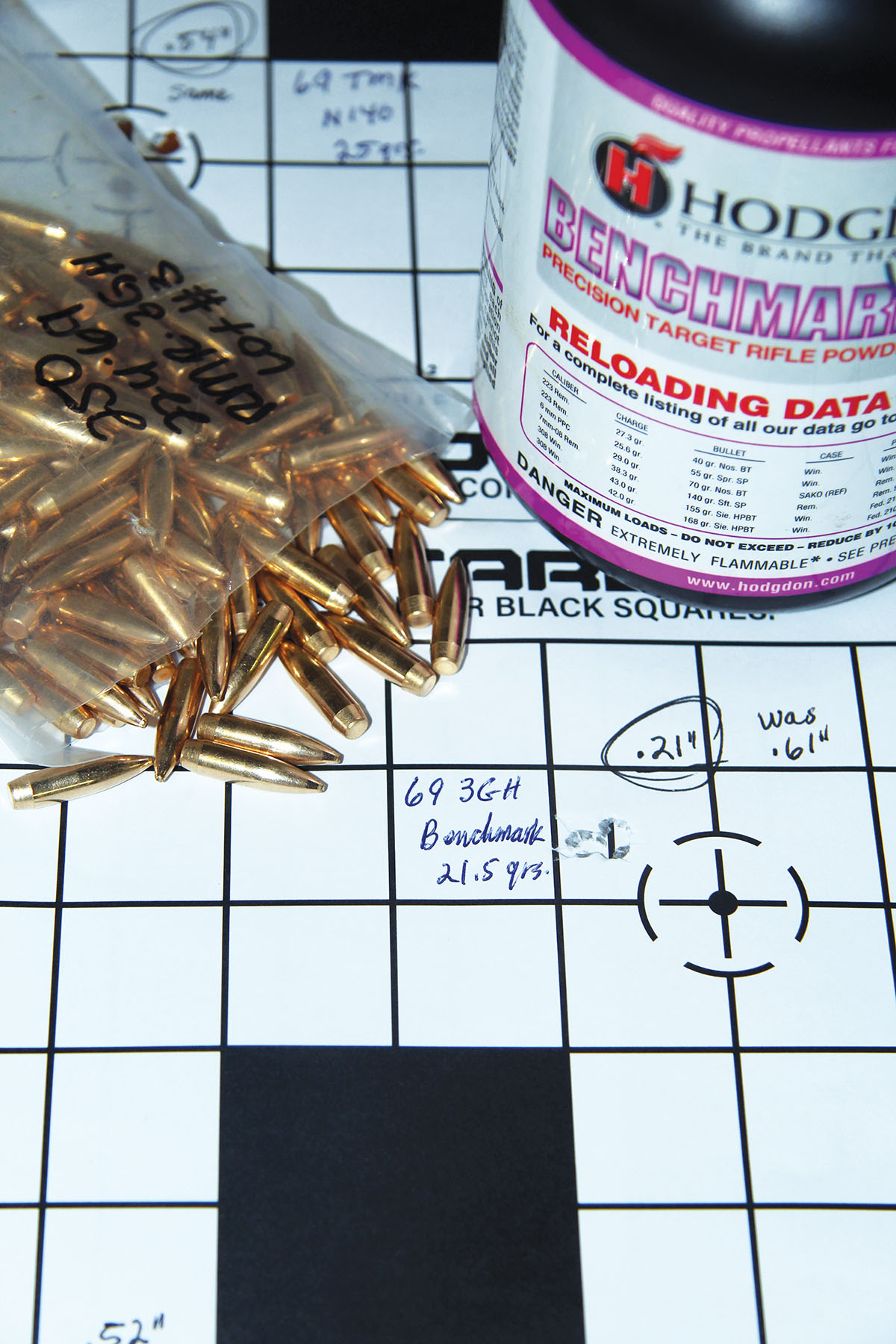
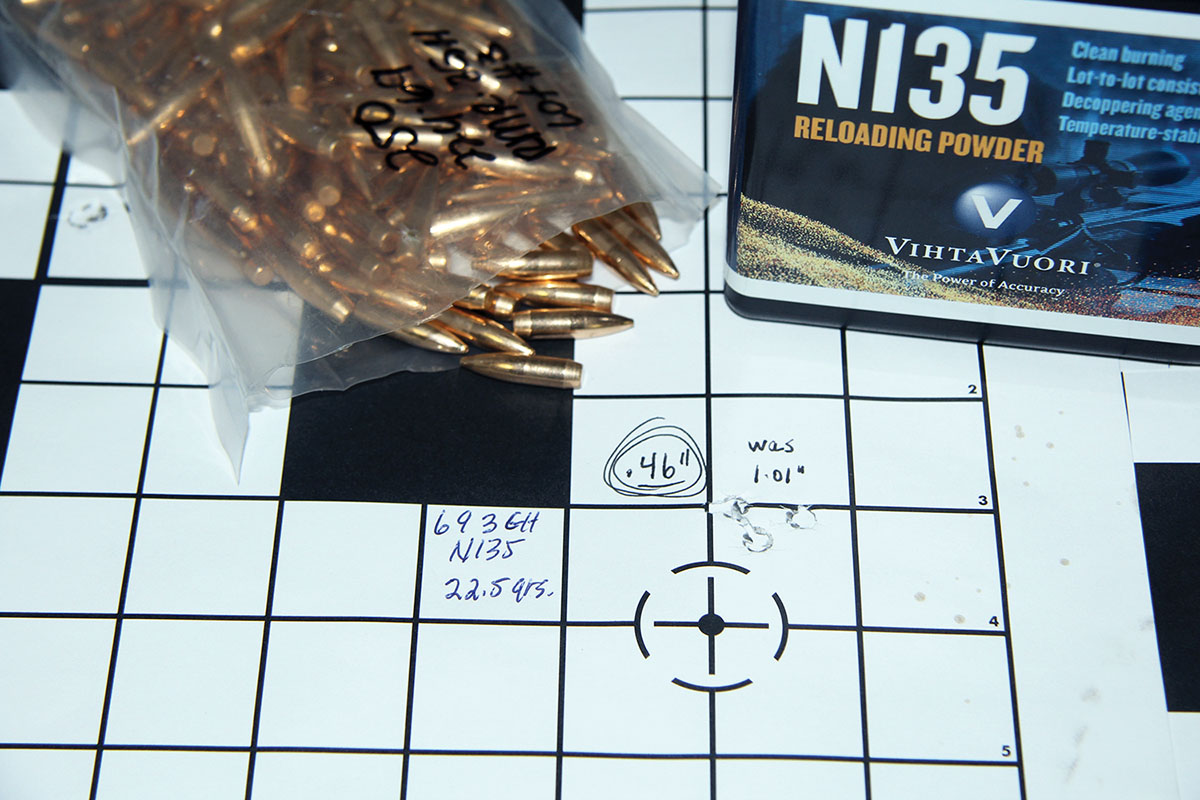
Many of AG Composites’ processes are automated to save time and lower costs, while also ensuring consistent quality. This starts with cutting every piece of carbon-fiber material and finishes with computer-controlled curing ovens guaranteeing each stock will not warp or crack at elevated temperatures, making them compatible with hydrographic dipping and paint processes, which also use elevated temperatures to apply.
Precision CNC machines then inlet each stock to ensure a precise drop-in action, bottom metal and barrel fit. After receiving my Chalk Branch, I inquired if it needed to be bedded. I was told that while it wasn’t taboo and most customers reported ½-MOA or better accuracy without bedding. Each AG Composites stock is test fit with action, bottom metal, and barrel hardware before it ships, a time-consuming quality control measure that ensures the stock you receive is truly drop-in ready.
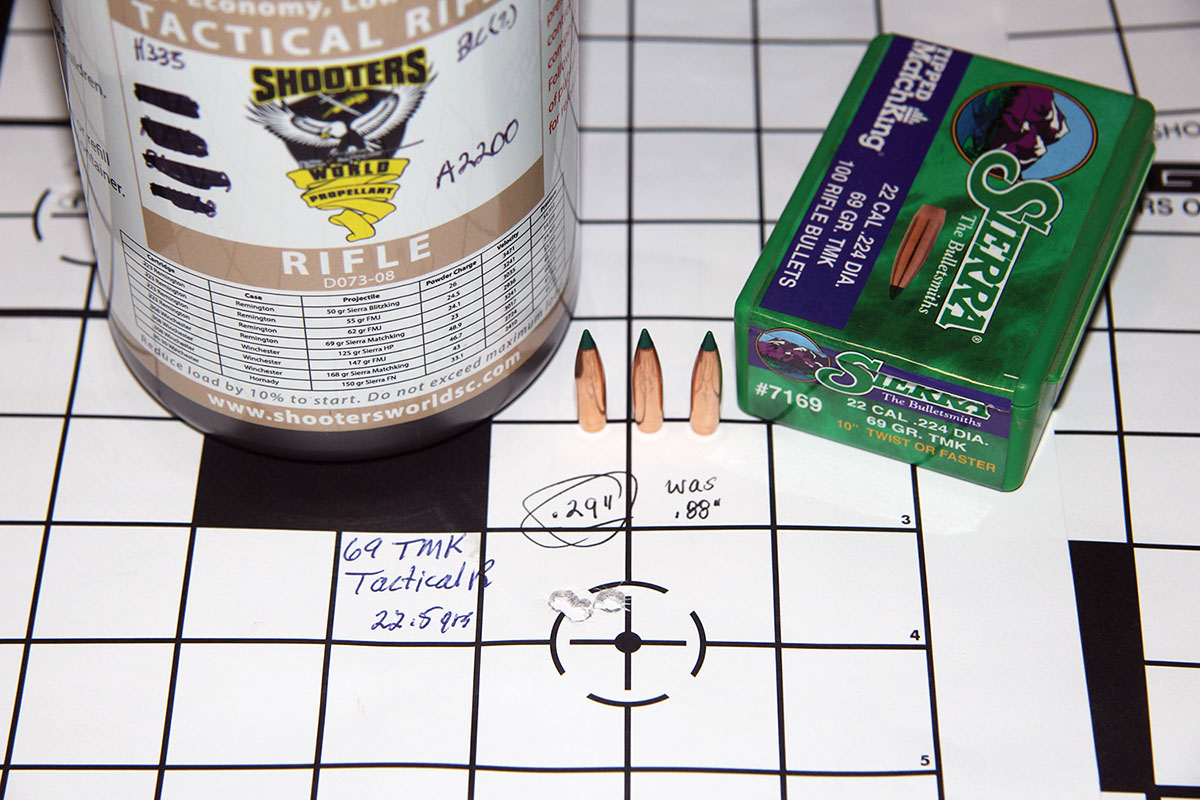
Ordering an AG Composites stock included six easy steps. First, a model is chosen from the models already outlined. Choice of dexterity, left or right in most models, is available. Choose a long or short action and the particular brand of action being accommodated – such as my own 223 Remington VTR SS on a Remington 700 short action. The stock was inletted for Remington BDL bottom metal, and I chose a Remington Varmint barrel contour, which as mentioned proved slightly tight for my VTR with the triangular barrel. All options to this point cost just $669. The custom Carbon Sagebrush Camo finish added $50 (and two to three weeks to delivery time), and the section of Picatinny rail another $50. Total $769. The stock arrived in five weeks. There are many additional options that can be chosen to add to their stock lineup, ranging from QD cups, ARCA rails, texturing, tripod mounts and much more.
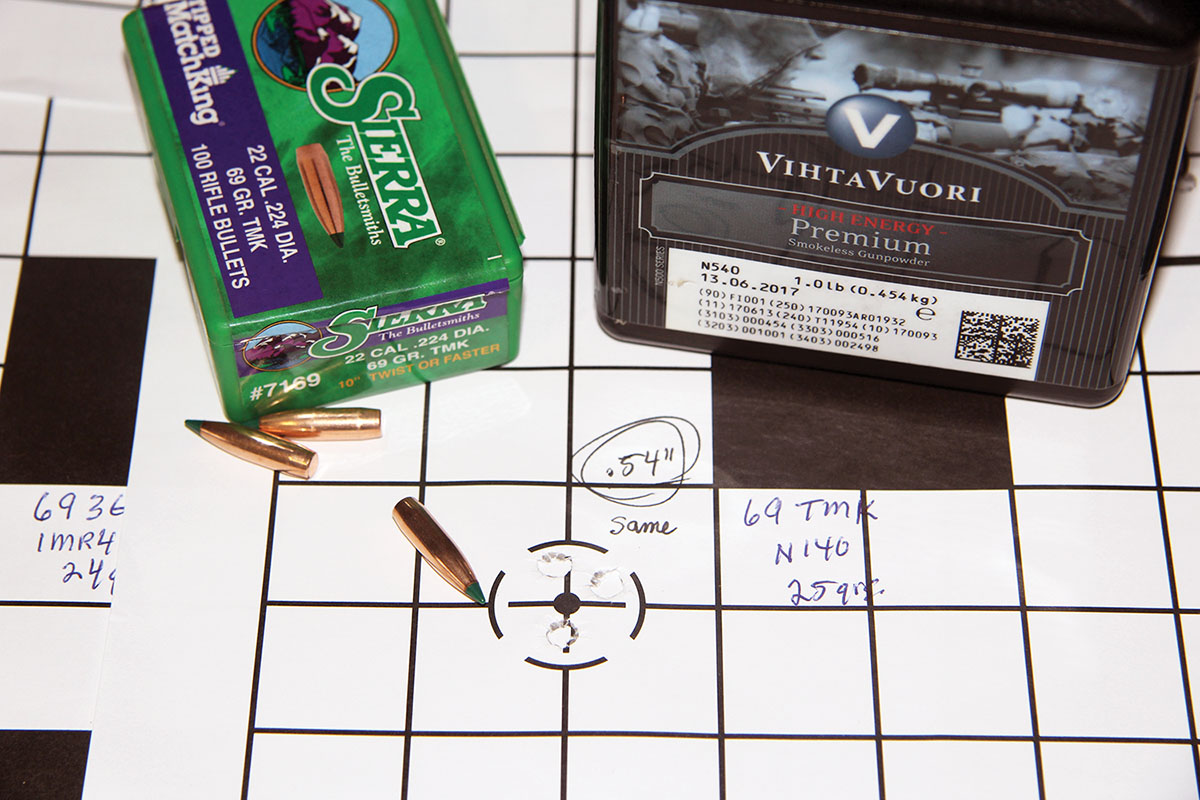
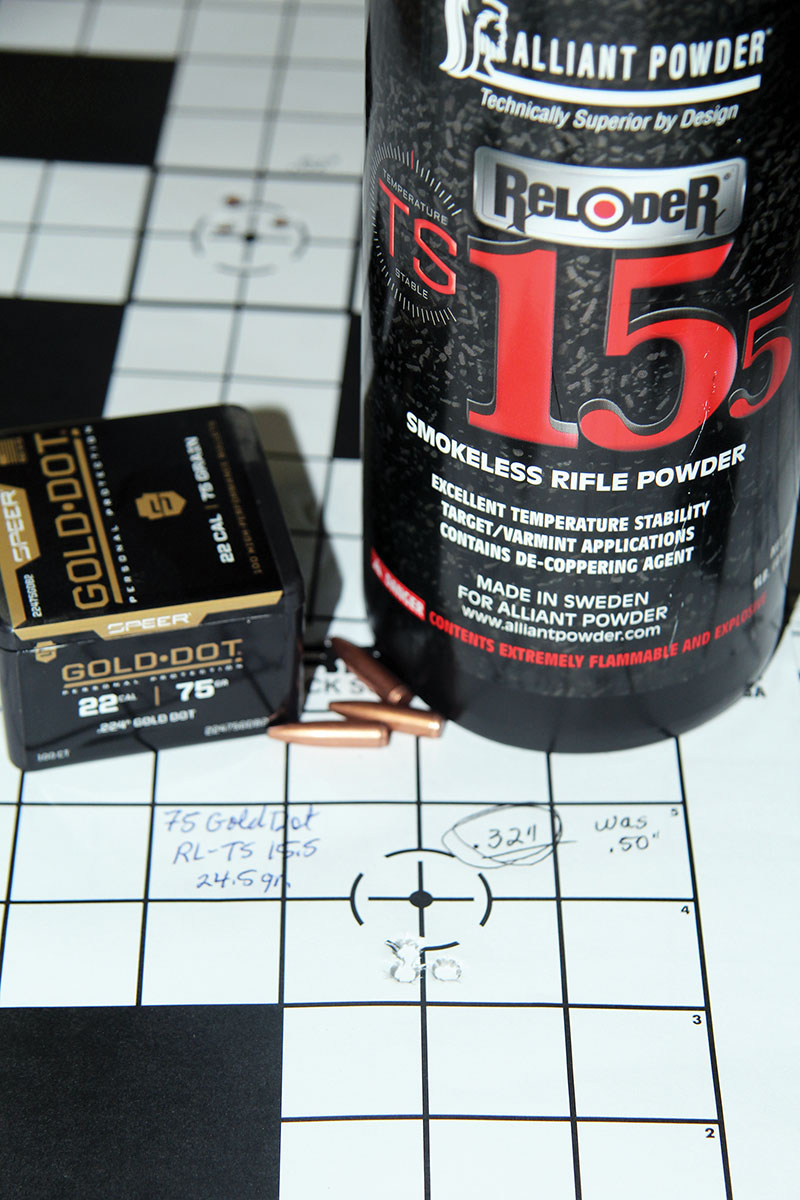
Load combinations included Rocky Mountain Reloading (RMR Bullets) 69-grain 3-Gun Hunter and charges of IMR-4166, Vihtavuori N135 and Hodgdon Benchmark; Sierra’s 69-grain Tipped MatchKing and charges of Shooters World Tactical Rifle, Vihtavuori N140 and Alliant Power Pro 2000-MR; and Speer’s 75-grain Gold Dot paired with Vihtavuori N540, Accurate 2460 and Alliant Reloder TS 15.5. Everything was duplicated carefully, including the actual Hornady brass used in the original test and CCI BR-4 Small Rifle primers, with assembly conducted using the same RCBS full-length dies.
Factors that did change include ambient temperature. The original test series was shot in summer during a 95-degree heatwave, while shooting for this test was conducted in near-freezing conditions. This provided interesting insight into the temperature stability of the powders used. The 75-grain Speer Gold Dot bullets did not come from the same lot as the original. I have found that Gold Dot accuracy varies greatly from lot-to-lot, as the electroplating process can result in slightly different results batch-to-batch.
Unsurprisingly, some loads grouped better with the new stock, a couple of loads exactly the same, and 13 out of 27 loads provided worse groups than the original set. Loads were chosen from the very best of the original test, which after further thought might not have been the best approach, as improving on already tight groups does not provide as wide a margin for improvement as starting with groups measuring, say, more than 1.50 inches. My overall impression is the new stock proved more consistent overall, eliminating the truly dismal groups (with one exception), and ultimately producing two of the smallest groups this rifle has ever assembled.
The 3-Gun Hunter produced a .76-inch group average with the factory stock, and a .68-inch group with the AG Composites stock, which is a 12 percent improvement. The Tipped MatchKing produced a .95-inch average with the original stock, and a .78-inch average with the new, an improvement of 22 percent. The Gold Dot provided a .79-inch average with the old stock and a .74-inch average with the new, creating a mere 7 percent improvement. The overall group average of all bullets and loads tested was .83 inch with the factory stock, and .73 inch with the AG Chalk Branch – an overall improvement of 13.5 percent. These improvements weren’t huge, but significant enough. This is in addition to the superior ergonomics the Chalk Branch provides, which should shave away some degree of shooting error, especially in the field where this rifle sees the most action.


